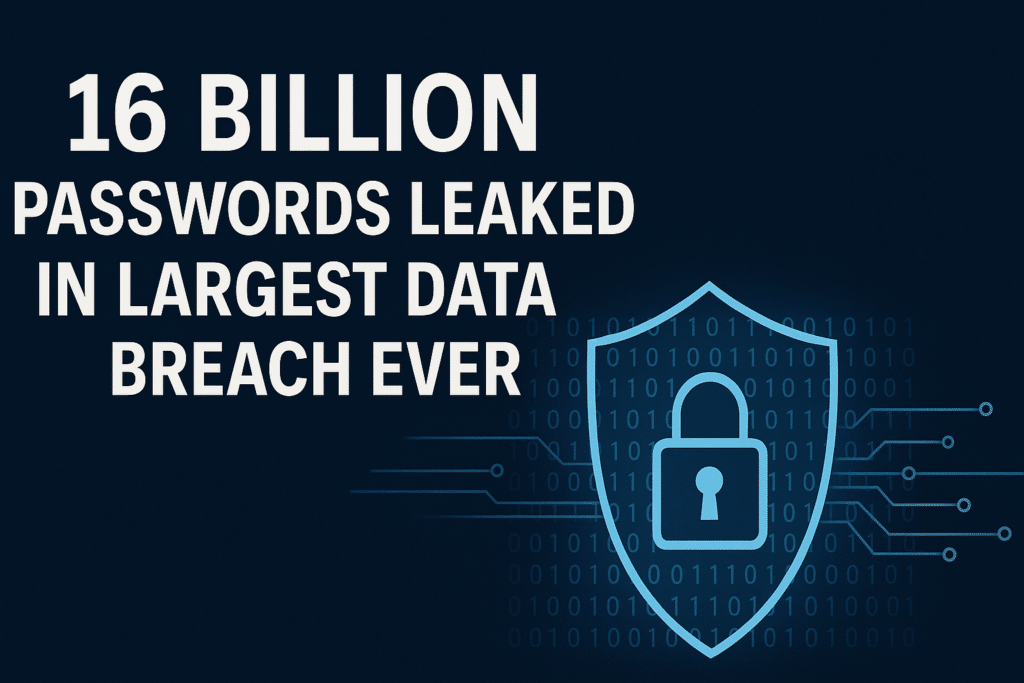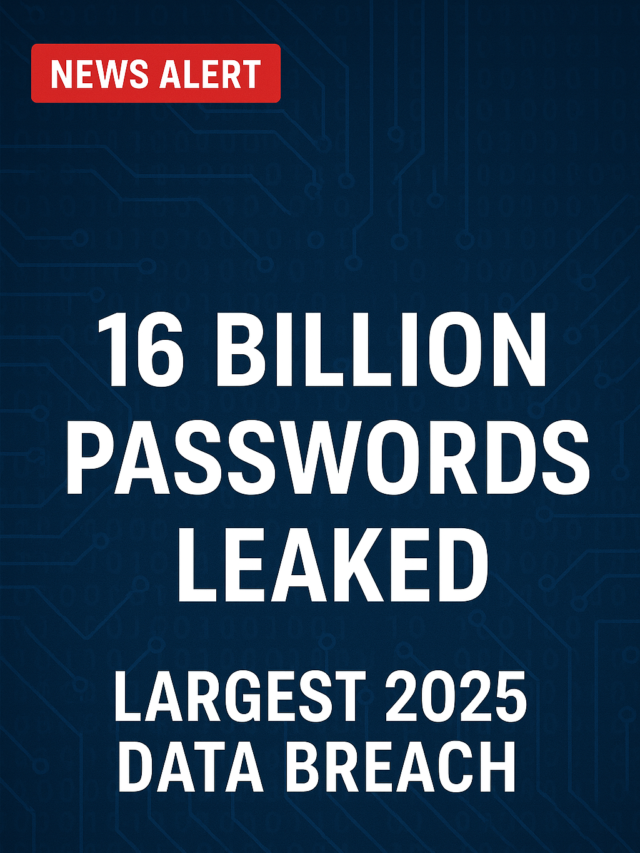
16 Billion Passwords Leaked in the Largest 2025 Data Breach Ever: What You Need to Know and Do Right Now
2025 Data Breach: 16 Billion Passwords Leaked in the Largest Credential Exposure Ever
In a shocking development that’s sending ripples across the cybersecurity landscape, researchers have uncovered what is now confirmed as the largest data breach of 2025. A staggering 16 billion usernames and passwords were discovered exposed in multiple unsecured databases scattered across the internet. This isn’t a targeted hack of a specific company—it’s a global exposure of digital identities collected silently over years.
The breach, dubbed the 2025 Data Breach Megadump, is a clear signal that password-based authentication is under siege. Here’s a complete breakdown of what happened, why it’s so dangerous, and what steps you must take today.
Table of Contents
🔍 What Is the 2025 Data Breach?
Cybersecurity researchers from Cybernews and renowned investigator Bob Diachenko uncovered a trove of databases hosting over 16 billion stolen login credentials. These weren’t hidden in the dark web—they were found on open, unprotected servers easily accessible to anyone.
Where did this data come from?
- Infostealer malware (e.g., RedLine, Raccoon, Vidar)
- Phishing campaigns and keyloggers
- User-side device infections
- Previously leaked credentials bundled with newer, unseen data
The stolen data includes:
- Email addresses, usernames, and passwords
- IP addresses and browser fingerprints
- Banking and cryptocurrency logins
- Social media and SaaS access credentials
- Session cookies and authentication tokens
Unlike older mega-leaks, much of this data is recent and valid, indicating ongoing malware activity leading into 2025.
Why the 2025 Password Leak Is a Digital Catastrophe
This is not an ordinary breach. Here’s why this incident marks a turning point in online security:
- 16 Billion Credentials = Multiple Exposures per Person
- The global population is 8 billion—meaning many users have multiple accounts leaked.
- This Is a User-Side Breach
- Unlike previous breaches (like LinkedIn or Equifax), these credentials were stolen from users’ infected devices, not from company servers.
- Credential Stuffing at Unprecedented Scale
- Attackers can automate login attempts across banking, social, and work platforms using leaked credential combos.
- Even Two-Factor Authentication (2FA) Isn’t Safe
- Some records include session tokens, making it possible to hijack active sessions.
- Trusted Services at Risk
- Affected services include Google, Microsoft, Apple, Facebook, Telegram, GitHub, Slack, banking apps, and even government portals.
This is not just a breach—it’s a breakdown of trust in the current password-based security model.
Who Is Affected by the 2025 Data Breach?
If you:
- Reuse passwords across services
- Haven’t enabled MFA
- Use autofill login forms
- Haven’t scanned your device for malware
…you’re likely impacted.
This breach affects:
- Gmail, Outlook, Yahoo, ProtonMail
- Facebook, Instagram, Twitter/X, Telegram
- GitHub, StackOverflow, Zoom, Slack
- Online banking, fintech, and crypto wallets
- Health portals, education platforms, and job boards
No matter your industry or tech comfort level, your digital presence is at risk.
🔐 How to Protect Yourself After the 2025 Password Dump
The good news? You can still secure your digital identity—if you act fast.
✅ 1. Change All Important Passwords
Start with email, banking, and primary social media accounts. Use unique passwords.
✅ 2. Use a Password Manager
Tools like Bitwarden, 1Password, and NordPass help create and store complex passwords securely.
✅ 3. Enable Multi-Factor Authentication (MFA)
Wherever possible. This adds a second layer of defense even if your password is exposed.
✅ 4. Check Your Exposure
Go to HaveIBeenPwned.com to see if your credentials were part of a known leak.
✅ 5. Scan Your Devices
Use antivirus or endpoint protection to detect and remove infostealers.
✅ 6. Use Passkeys Where Available
Apple, Google, and Microsoft now offer passwordless authentication—more secure and phishing-resistant.
✅ 7. Monitor Accounts for Suspicious Activity
Keep an eye on login alerts and unauthorized sessions.
How This Breach Redefines Cybersecurity in 2025
The 2025 data breach is different:
- It wasn’t a single event—it’s a rolling data tsunami
- It reflects years of silent infiltration
- It proves user education and proactive defense are more important than ever
Password-only security models are outdated. The future lies in device-based logins, biometrics, and zero-trust systems.
Why This Matters to Everyone, Not Just Techies
Think you’re safe because you don’t run a company?
Think again:
- Your Gmail account holds recovery access to everything
- Your social accounts can be used for impersonation scams
- Your work login can jeopardize your employer
Whether you’re a parent, student, freelancer, or CEO, the 2025 data breach affects you.
Final Thoughts: Don’t Be a Statistic
This breach is historic in scale and scope. But there’s a silver lining—it’s also a wake-up call.
- Talk to your family and colleagues
- Share resources
- Start using passkeys where possible
Digital safety in 2025 isn’t just a tech problem—it’s a life skill.

